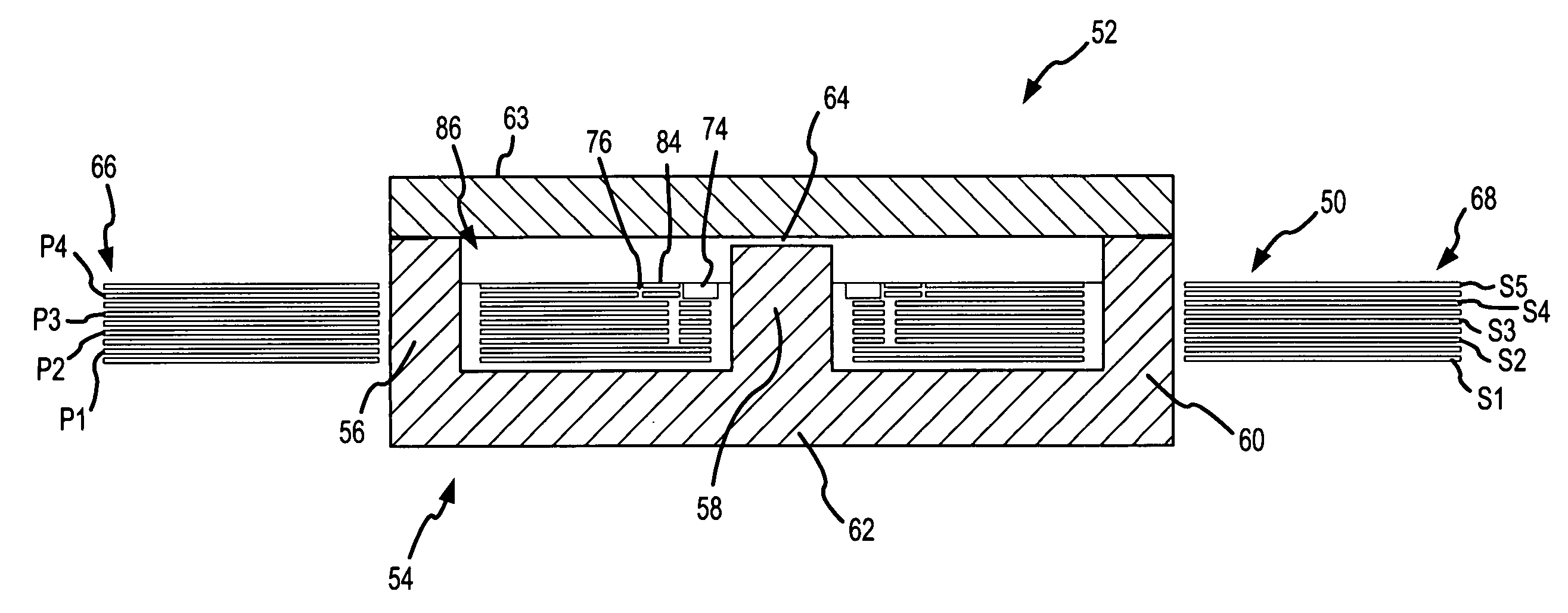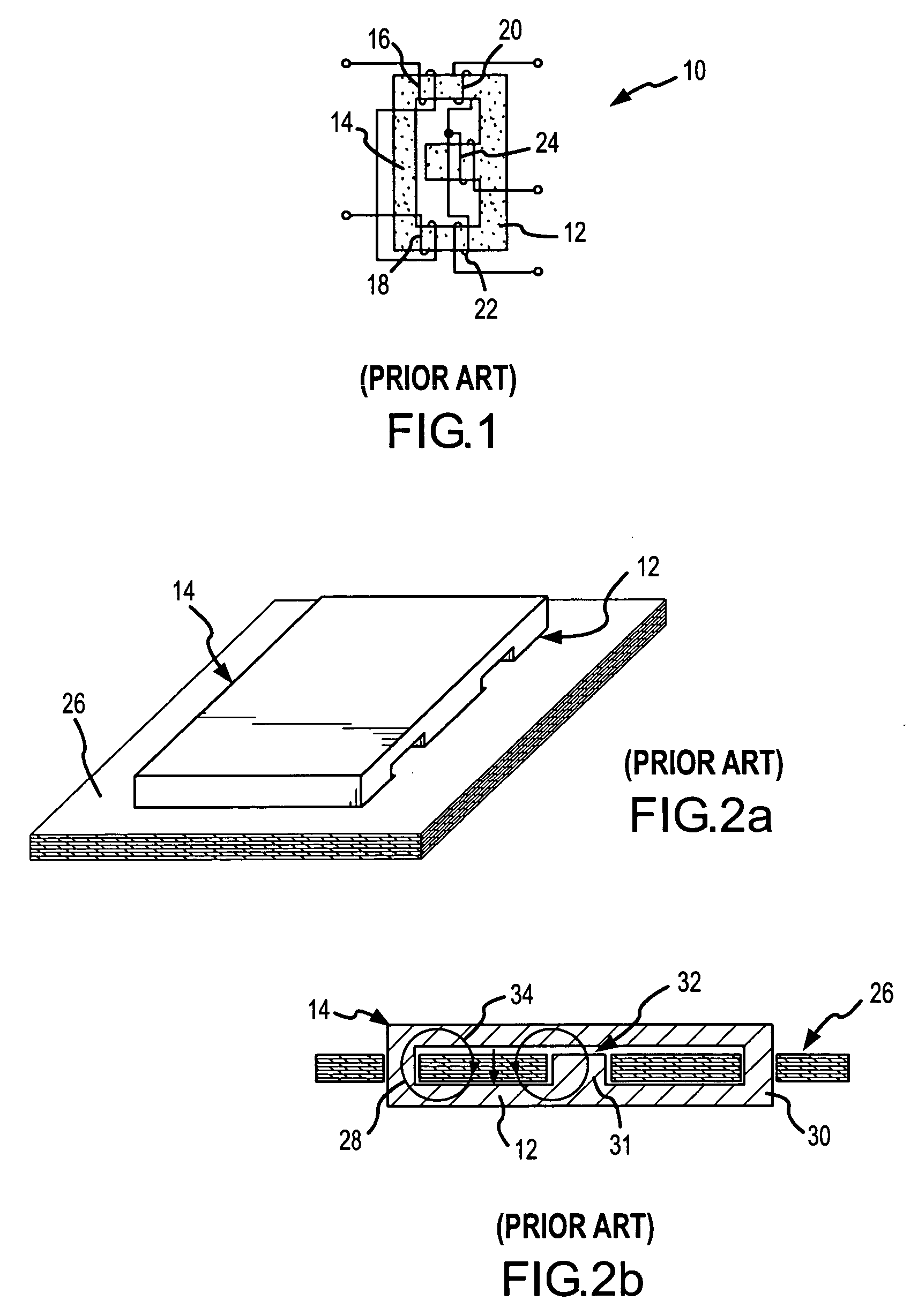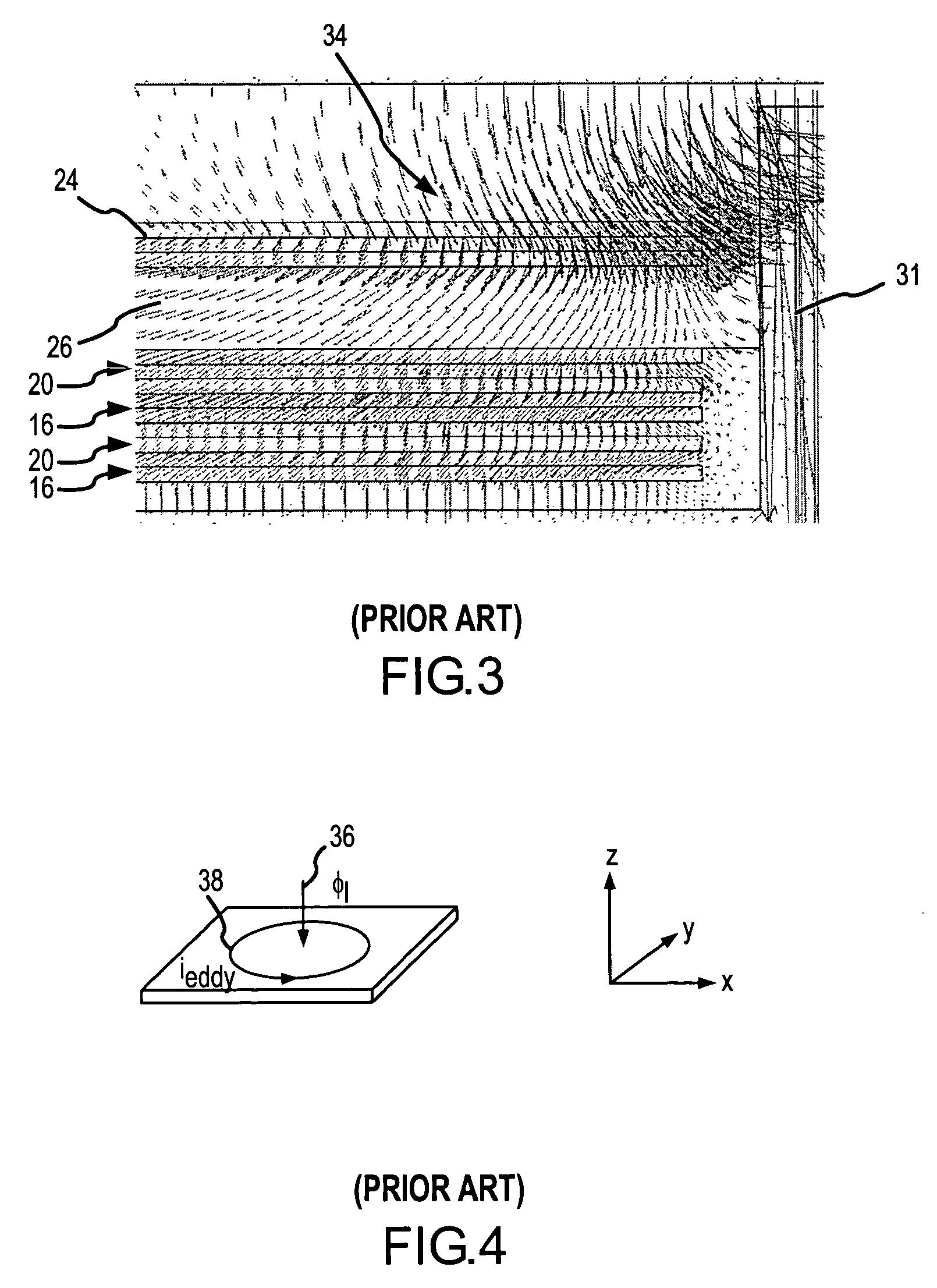Winding structure for efficient switch-mode power converters
a winding structure and switch-mode technology, applied in the direction of transformer/inductance details, coils, apparatus with intermediate ac conversion, etc., can solve the problems of limiting the uniform current and eddy current that may circulate in the winding, and the uniform winding impedance, so as to reduce the loss of eddy current, improve the efficiency of the converter and the core utilization, and improve the uniformity of current.
- Summary
- Abstract
- Description
- Claims
- Application Information
AI Technical Summary
Benefits of technology
Problems solved by technology
Method used
Image
Examples
Embodiment Construction
[0021] The present invention modifies the conventional winding structure for planar integrated magnetics by etching cutout and / or keep away regions in the planar copper windings near the center leg. By accepting a marginal increase in the DC winding resistance, we are able to drastically reduce the AC winding resistance and the eddy current losses in the presence of a leakage field by at least 25%. The net result is improved current uniformity with lower losses, hence higher converter efficiency. Because the strength of the fringing flux decreases as you move down and away from the air gap, windings closest to the air gap are formed with both keep away regions and cutouts. Windings a little further away are formed with only cutouts and the windings furthest away are unchanged. The precise configuration is determined by the core structure, air gap and winding arrangements to optimize converter efficiency.
[0022] By way of example, the improved winding arrangement was implemented and ...
PUM
 Login to View More
Login to View More Abstract
Description
Claims
Application Information
 Login to View More
Login to View More - R&D
- Intellectual Property
- Life Sciences
- Materials
- Tech Scout
- Unparalleled Data Quality
- Higher Quality Content
- 60% Fewer Hallucinations
Browse by: Latest US Patents, China's latest patents, Technical Efficacy Thesaurus, Application Domain, Technology Topic, Popular Technical Reports.
© 2025 PatSnap. All rights reserved.Legal|Privacy policy|Modern Slavery Act Transparency Statement|Sitemap|About US| Contact US: help@patsnap.com



